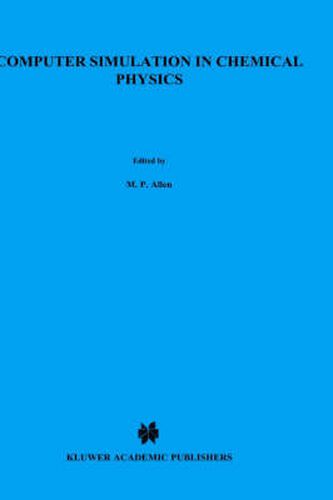Readings Newsletter
Become a Readings Member to make your shopping experience even easier.
Sign in or sign up for free!
You’re not far away from qualifying for FREE standard shipping within Australia
You’ve qualified for FREE standard shipping within Australia
The cart is loading…






Computer Simulation in Chemical Physics contains the proceedings of a NATO Advanced Study Institute held at CORISA, Alghero, Sardinia, in September 1992. In the years that have elapsed since the field was last summarised there have been a number of advances which have significantly expanded the scope of the methods. Good examples are the Car-Parrinello method, which allows the study of materials with itinerant electrons; the Gibbs technique for the direct simulation of liquid vapour phase equilibria; the transfer of scaling concepts from simulations of spin models to more complex systems; and the development of the configurational-biased Monte-Carlo methods for studying dense polymers. The field has also been stimulated by an enormous increase in available computing power and the provision of recent software. All these developments, and more, are discussed in an accessible way here, making the text suitable reading for graduate students and research scientists in both academic and industrial settings.
$9.00 standard shipping within Australia
FREE standard shipping within Australia for orders over $100.00
Express & International shipping calculated at checkout
Computer Simulation in Chemical Physics contains the proceedings of a NATO Advanced Study Institute held at CORISA, Alghero, Sardinia, in September 1992. In the years that have elapsed since the field was last summarised there have been a number of advances which have significantly expanded the scope of the methods. Good examples are the Car-Parrinello method, which allows the study of materials with itinerant electrons; the Gibbs technique for the direct simulation of liquid vapour phase equilibria; the transfer of scaling concepts from simulations of spin models to more complex systems; and the development of the configurational-biased Monte-Carlo methods for studying dense polymers. The field has also been stimulated by an enormous increase in available computing power and the provision of recent software. All these developments, and more, are discussed in an accessible way here, making the text suitable reading for graduate students and research scientists in both academic and industrial settings.